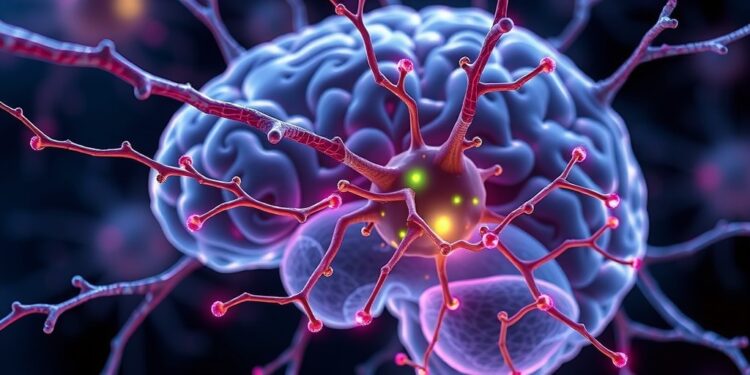
In a groundbreaking study, researchers at the Massachusetts Institute of Technology (MIT) have unveiled a revolutionary method to convert skin cells directly into neurons, bypassing the complex and time-consuming intermediate step of inducing pluripotent stem cells (iPSCs). This innovative approach not only streamlines the process of cellular reprogramming but also holds significant implications for regenerative medicine, particularly in treating neurodegenerative diseases and spinal cord injuries. The ability to directly convert somatic cells into functional neurons presents an exciting avenue for enhancing cell replacement therapies.
Traditional methods of cell conversion require the reprogramming of differentiated cells into iPSCs, which can then be directed to form specific cell types, including neurons. This indirect route is fraught with inefficiencies; the process takes several weeks, and often yields a low proportion of desired, fully differentiated cells. Researchers initially face challenges as many cells remain trapped in immature transitional states during this extensive reprogramming phase, presenting significant barriers to effective therapeutic application.
The MIT team, under the leadership of Katie Galloway, has taken a significant leap forward by demonstrating that it’s possible to achieve a high yield of motor neurons directly from skin cells through a process utilizing only three transcription factors, coupled with two additional genes that promote cell proliferation. This marks a pivotal moment for the field of cellular reprogramming, enabling a drastic increase in neuron yield from a single skin cell to over 10 times more than previously observed.
To achieve this efficiency, Galloway’s research group initially tested a combination of six transcription factors, which are proteins that regulate gene expression necessary for cell identity transformation. Through systematic elimination, the researchers successfully determined that the combination of transcription factors NGN2, ISL1, and LHX3 was sufficient to facilitate the conversion of skin cells into functional motor neurons. This innovative method allows for standardization and control over gene expression levels, enhancing the overall reproducibility of the process.
Importantly, the incorporation of genes such as p53DD and a mutated version of HRAS proved crucial for driving increased cellular proliferation before the transformation into neurons begins. By inducing skin cells to proliferate extensively, the researchers observed a notable increase in the receptivity of these cells to the transcription factors, resulting in conversion rates reaching an unprecedented 1,100 percent yield.
Beyond successful conversion, the MIT team further explored the practical applications of their findings by investigating the feasibility of implanting these neurons into living organisms. In collaboration with colleagues at Boston University, the researchers successfully engrafted the converted motor neurons into the striatum of mice, a critical area of the brain involved in motor control. Remarkably, after a two-week observation period, many of the implanted neurons not only survived but also began forming connections with surrounding brain tissue, indicative of successful integration and functionality.
Through careful monitoring, the researchers recorded measurable electrical activity from the implanted neurons, suggesting that these cells are capable of conducting signals and interacting with existing neural circuits. This function is pivotal, as effective communication between neurons is essential for restoring motor control following injury or disease. The ability to create a functional population of neurons from simple skin samples represents a significant stride towards practical regenerative therapies for neurological disorders.
Looking ahead, the research team is enthusiastic about improving the efficiency of this method for human cell conversion. Enhancing yield rates for human motor neuron generation could pave the way for increased availability of cells needed for clinical applications, particularly in conditions such as Amyotrophic Lateral Sclerosis (ALS) and other motor impairments. The transition towards human trials is further encouraged by current clinical efforts utilizing iPSC-derived neurons, underscoring a strong demand for effective and scalable cell therapies.
Galloway and her colleagues envision this research not only reducing the time urgency associated with stem cell therapy but also simplifying the manufacturing process of neuronal cells. This could lower costs, broaden accessibility for clinical applications, and substantially expedite the collaborative search for effective interventions for devastating neurological conditions.
In summary, MIT’s pioneering advancements in cell reprogramming provide promising new methodologies for producing functional neuronal cells with high efficiency and potentially transformative therapeutic applications. The elimination of the iPSC stage creates a streamlined process that could revolutionize the creation of cell lines for research and clinical therapies, propelling a new era of regenerative medicine where direct conversion techniques become integral to developing effective treatments for motor neuron diseases and spinal cord injuries.
These findings, recently published in the journal Cell Systems, mark a significant contribution to the scientific understanding of cellular reprogramming. The work not only has the potential to inform therapeutic strategies but also inspires future research aimed at further refining direct conversion techniques for various cell types, leveraging the inherent plasticity of somatic cells to meet clinical needs.
With continued efforts and enhancements, this innovative technology promises to usher in new hope for patients awaiting effective treatments for neurological disorders. The team’s dedication to unlocking the complexities of cell differentiation and integration within the human body sets the stage for meaningful advancements in the realm of regenerative medicine, capturing the essence of what modern science can achieve in response to dire medical challenges.
Subject of Research: Direct conversion of skin cells to motor neurons
Article Title: Proliferation history and transcription factor levels drive direct conversion to motor neurons
News Publication Date: 13-Mar-2025
Web References: DOI Link
References: MIT, Cell Systems
Image Credits: MIT Media Relations
Keywords
Life sciences, Skin cells, Somatic cells, Motor neurons, Stem cell research, Chemical processes, Signal processing, Motor development, Neurological disorders.
Tags: cell replacement therapiesdirect cellular reprogramming methodimplications for regenerative medicineinduced pluripotent stem cells challengesinnovative approaches in neuroscienceMIT engineering breakthroughmotor neurons productionneurodegenerative disease treatmentsskin cells to neurons conversionspinal cord injury therapiestraditional cell conversion methodstranscription factors in cell therapy





